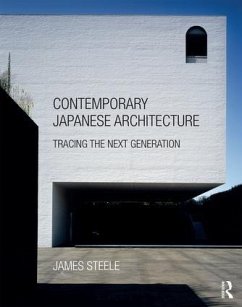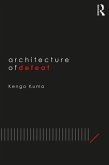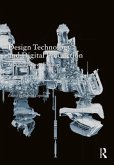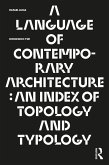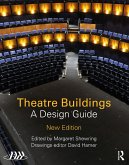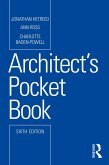James Steele (USA University of Southern California)
Contemporary Japanese Architecture
Tracing the Next Generation
James Steele (USA University of Southern California)
Contemporary Japanese Architecture
Tracing the Next Generation
- Broschiertes Buch
- Merkliste
- Auf die Merkliste
- Bewerten Bewerten
- Teilen
- Produkt teilen
- Produkterinnerung
- Produkterinnerung
By combining illustrations with timelines and graphics to explain complex ideas, the book is accessible to any student seeking to understand contemporary Japanese architecture.
Andere Kunden interessierten sich auch für
![Architecture of Defeat Architecture of Defeat]() Kengo Kuma (Kengo Kuma Architects and Japan Associates)Architecture of Defeat55,99 €
Kengo Kuma (Kengo Kuma Architects and Japan Associates)Architecture of Defeat55,99 €![Kenzo Tange and the Metabolist Movement Kenzo Tange and the Metabolist Movement]() Zhongjie Lin (University of North Carolina, Charlotte, USA)Kenzo Tange and the Metabolist Movement49,99 €
Zhongjie Lin (University of North Carolina, Charlotte, USA)Kenzo Tange and the Metabolist Movement49,99 €![Design Technology and Digital Production Design Technology and Digital Production]() Design Technology and Digital Production49,99 €
Design Technology and Digital Production49,99 €![A Language of Contemporary Architecture A Language of Contemporary Architecture]() Rafael LunaA Language of Contemporary Architecture55,99 €
Rafael LunaA Language of Contemporary Architecture55,99 €![Photography for Architects Photography for Architects]() Martine Hamilton KnightPhotography for Architects49,99 €
Martine Hamilton KnightPhotography for Architects49,99 €![Theatre Buildings Theatre Buildings]() Theatre Buildings78,99 €
Theatre Buildings78,99 €![Architect's Pocket Book Architect's Pocket Book]() Jonathan Hetreed (UK Hetreed Ross Architects)Architect's Pocket Book45,99 €
Jonathan Hetreed (UK Hetreed Ross Architects)Architect's Pocket Book45,99 €-
-
-
By combining illustrations with timelines and graphics to explain complex ideas, the book is accessible to any student seeking to understand contemporary Japanese architecture.
Produktdetails
- Produktdetails
- Verlag: Taylor & Francis Ltd
- Seitenzahl: 290
- Erscheinungstermin: 24. Mai 2017
- Englisch
- Abmessung: 279mm x 217mm x 19mm
- Gewicht: 1052g
- ISBN-13: 9781138941250
- ISBN-10: 1138941255
- Artikelnr.: 48251594
- Herstellerkennzeichnung
- Libri GmbH
- Europaallee 1
- 36244 Bad Hersfeld
- gpsr@libri.de
- Verlag: Taylor & Francis Ltd
- Seitenzahl: 290
- Erscheinungstermin: 24. Mai 2017
- Englisch
- Abmessung: 279mm x 217mm x 19mm
- Gewicht: 1052g
- ISBN-13: 9781138941250
- ISBN-10: 1138941255
- Artikelnr.: 48251594
- Herstellerkennzeichnung
- Libri GmbH
- Europaallee 1
- 36244 Bad Hersfeld
- gpsr@libri.de
James Steele is an architect who received both his bachelor's and master's degrees from the University of Pennsylvania, and practiced in the Philadelphia region before accepting a position at Dammam University in Saudi Arabia where he taught for eight years. He then served as Senior Editor at Academy Editions, and taught at the Prince of Wales's Institute of Architecture in London before relocating to the University of Southern California School of Architecture in 1991, receiving a PhD in Urban Planning and Development at USC in 2002. Professor Steele has taught history and theory as well as design studio, and also organized the first Foreign Studies Program for architecture students in Malaysia in 1998. He administered it up through its fifteenth and final session in 2013 and then founded and became the director of a new undergraduate program in South America, based in Sao Paulo, Brazil. He has written extensively on contemporary architecture and has been a guest critic and speaker at numerous universities in the United States and internationally.
Acknowledgements. Introduction: The (Dis) Continuities of Japanese
Architecture. Part 1: An Enduring Cultural Framework. 1. The Land and its
People. 2. History and Religion. 3: Paroxysm and Change. Part 2: From
Modernity to Modernism: 1869-1940. 4. The Search for Knowledge and its
Consequences. 5. Modernism Sidetracked on the Road to War. Part 3: From
Re-birth to Economic Collapse. 6. Post-War Reconstruction, From Survival to
Recovery: 1945- 1950. 7. The Le Corbusier Syndrome. 8. Metabolism
Revisited. 9.Expo '70: A Joyful Vision of a New World. 10. The Shinohara
School. 11. Post-Modernism: Apostasy or Prophesy? 12. A Decade of Excess:
Life Inside the Bubble. Part 4: Transitional Figures. 13: Witness to War.
14: Conflicting Identities. 15: Relief and Rebuilding. Part 5: The Next
Generation. 16. Doing More With Less. 17. On the Surface. 18. Intersticial
Space: The New Engawa. 19. Reinventing Modernism. 20. Technology As Nature.
21. Searching for the Sublime. Notes. Bibliography. Glossary. Index.
Architecture. Part 1: An Enduring Cultural Framework. 1. The Land and its
People. 2. History and Religion. 3: Paroxysm and Change. Part 2: From
Modernity to Modernism: 1869-1940. 4. The Search for Knowledge and its
Consequences. 5. Modernism Sidetracked on the Road to War. Part 3: From
Re-birth to Economic Collapse. 6. Post-War Reconstruction, From Survival to
Recovery: 1945- 1950. 7. The Le Corbusier Syndrome. 8. Metabolism
Revisited. 9.Expo '70: A Joyful Vision of a New World. 10. The Shinohara
School. 11. Post-Modernism: Apostasy or Prophesy? 12. A Decade of Excess:
Life Inside the Bubble. Part 4: Transitional Figures. 13: Witness to War.
14: Conflicting Identities. 15: Relief and Rebuilding. Part 5: The Next
Generation. 16. Doing More With Less. 17. On the Surface. 18. Intersticial
Space: The New Engawa. 19. Reinventing Modernism. 20. Technology As Nature.
21. Searching for the Sublime. Notes. Bibliography. Glossary. Index.
Acknowledgements. Introduction: The (Dis) Continuities of Japanese
Architecture. Part 1: An Enduring Cultural Framework. 1. The Land and its
People. 2. History and Religion. 3: Paroxysm and Change. Part 2: From
Modernity to Modernism: 1869-1940. 4. The Search for Knowledge and its
Consequences. 5. Modernism Sidetracked on the Road to War. Part 3: From
Re-birth to Economic Collapse. 6. Post-War Reconstruction, From Survival to
Recovery: 1945- 1950. 7. The Le Corbusier Syndrome. 8. Metabolism
Revisited. 9.Expo '70: A Joyful Vision of a New World. 10. The Shinohara
School. 11. Post-Modernism: Apostasy or Prophesy? 12. A Decade of Excess:
Life Inside the Bubble. Part 4: Transitional Figures. 13: Witness to War.
14: Conflicting Identities. 15: Relief and Rebuilding. Part 5: The Next
Generation. 16. Doing More With Less. 17. On the Surface. 18. Intersticial
Space: The New Engawa. 19. Reinventing Modernism. 20. Technology As Nature.
21. Searching for the Sublime. Notes. Bibliography. Glossary. Index.
Architecture. Part 1: An Enduring Cultural Framework. 1. The Land and its
People. 2. History and Religion. 3: Paroxysm and Change. Part 2: From
Modernity to Modernism: 1869-1940. 4. The Search for Knowledge and its
Consequences. 5. Modernism Sidetracked on the Road to War. Part 3: From
Re-birth to Economic Collapse. 6. Post-War Reconstruction, From Survival to
Recovery: 1945- 1950. 7. The Le Corbusier Syndrome. 8. Metabolism
Revisited. 9.Expo '70: A Joyful Vision of a New World. 10. The Shinohara
School. 11. Post-Modernism: Apostasy or Prophesy? 12. A Decade of Excess:
Life Inside the Bubble. Part 4: Transitional Figures. 13: Witness to War.
14: Conflicting Identities. 15: Relief and Rebuilding. Part 5: The Next
Generation. 16. Doing More With Less. 17. On the Surface. 18. Intersticial
Space: The New Engawa. 19. Reinventing Modernism. 20. Technology As Nature.
21. Searching for the Sublime. Notes. Bibliography. Glossary. Index.

